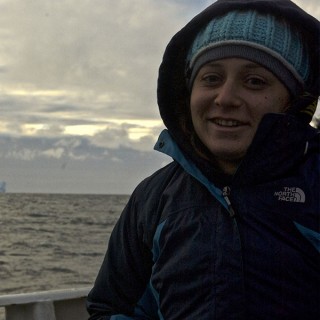Moving a laboratory onto a ship is no small feat. Multiple days are required just to transfer gear from shore to ship. It’s somewhat similar to moving from your own home to a dormitory, where more people share smaller spaces. On top of that, your schedule is always different, often times working in the evenings or for long hours. When equipment isn’t working, you power through the nights and days on minimal sleep trying to resolve issues.
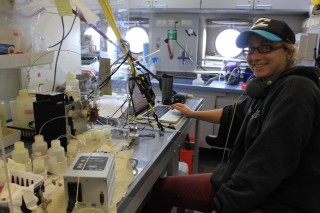
When troubleshooting, you always begin with the hope that things will work after a few alterations; but, this is not always the case. After enduring hours of hard work, you realize that equipment issues are extremely valuable learning experiences that should be taken as an opportunity to better understand what potential issues may arise for the future.
Finding Iron
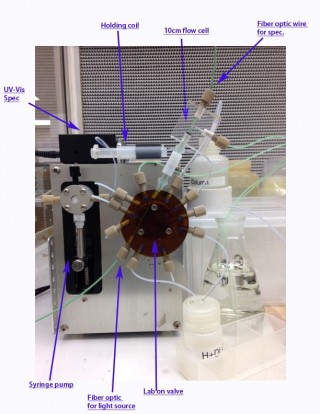
As a graduate student, you learn to adapt, and to sieze opportunities such as this one when presented. I am a currently working on developing an instrument that can quickly measure dissolved iron in seawater with just a few drops of a sample. You may wonder why anyone would care about iron in the ocean? Well, you may not realize this, but humans need iron to grow, just like the tiny ocean plants phytoplankton! Many areas in the ocean have plenty of resources for phytoplankton but not enough iron to support growth. Moreover, iron can be used by microorganisms in the deep sea to grow in a matter similar to photosynthesis, but use chemicals instead of the sun as a source of energy.
My goal for this cruise is to validate a new method for measuring iron by comparing my results with those of other research groups and with shore-based analyses following the cruise to Loihi. This requires making up solutions that will show color in the presence of iron in the collected seawater samples. By looking at the amount of light passing through the solution at a certain color, we can see how much light is absorbed. The more color – the higher the concentration of iron, which is what I look for. This may sound easy, but the iron that we are measuring is extremely low in concentration, around parts per billion. This is like trying to find a white gumball in a sea of golf balls, so precision and accuracy are key. Keeping the samples from getting mixed with other chemicals or samples is very important. If a single solution is contaminated, then analyses are compromised.
Contaminated samples
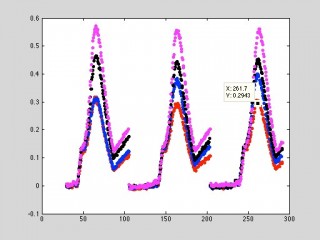
Unfortunately, I have found that one of my samples has been contaminated. After spending 26 hours sampling and troubleshooting, I finally have found the culprit; this is the first step in fixing the problem. Unfortunately, the contamination has been with my main reagent, the chemical that colors the water to determine iron concentration. This means that my analyses will not be possible or at least not very precise. However, this is not the end of the world as the samples can still be collected and taken back to shore for analysis. There are also still many days left on the excursion to find a solution to my problem! So like all good scientists, I continue to persevere looking for a new solution and constantly learn from the situation.
UPDATE: Since writing this yesterday, I have found a solution by flushing the system several times. We are back up and running, and now processing samples. Another lesson learned, patience is important!
Learning from others
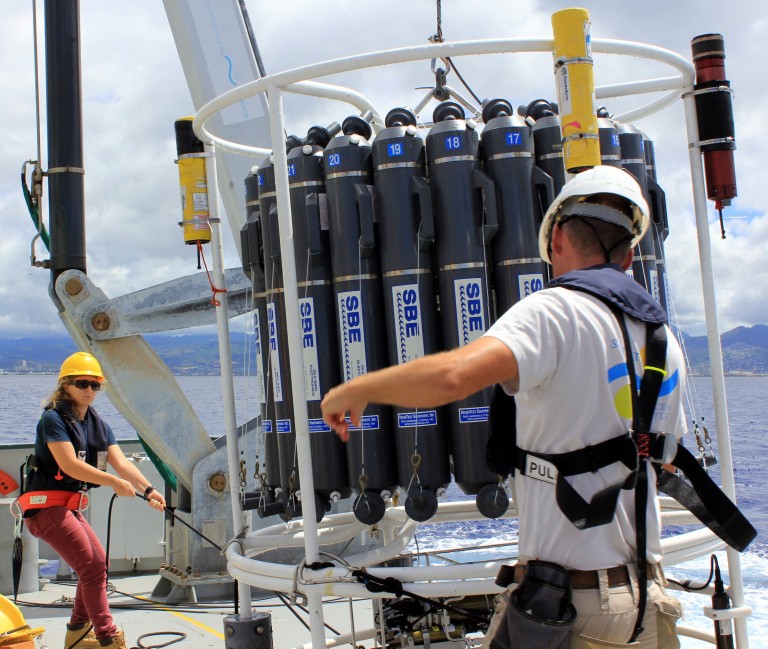
One of the other important things to remember is to seek help from your colleagues. Luckily on this cruise I am surrounded by other students and scientists with a wealth of knowledge and expertise. Luckily, their samples are fine so I can watch and learn from them. This provides an additional opportunity to gain experience working with others and listening to different perspectives. On research cruises such as this one, you are working and living side by side with your colleagues and they quickly become your friends. Therefore, the best research advice that I have learned on this trip also comes from that little-known British band – The Beatles, and as the song goes…“I get by with a little help from my friends.”
